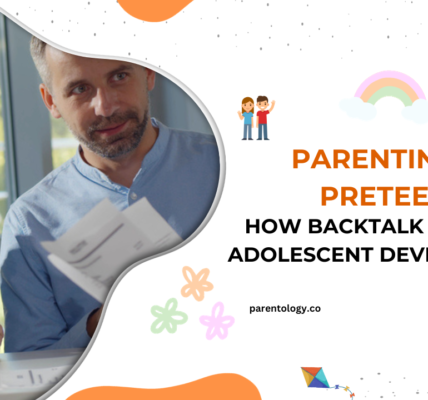Recognizing the Signs: Understanding How Test Anxiety and Social Pressure Manifest in 10-Year-Olds
As parents, understanding the intricate signs of anxiety in our 10-year-olds is crucial for providing the necessary support. This article delves into the manifestation of test kids with anxiety and social pressure in children, exploring ways to recognize and alleviate these challenges.
The Landscape of Kids with Anxiety
Exploring the Depths of Anxiety in Children
Anxiety in children is a multifaceted experience, with various triggers and manifestations. Test anxiety and social pressure are two prevalent forms that can significantly impact a 10-year-old’s well-being.
Test Anxiety in 10-Year-Olds
Signs of Test Anxiety
Recognizing the signs of test anxiety empowers parents to intervene effectively. Watch for:
- Physical symptoms like headaches or stomachaches before tests.
- Emotional indicators such as excessive worry or fear of failure.
- Behavioral cues like procrastination or avoidance of study sessions.
Understanding the Impact
Test anxiety not only affects academic performance but can also lead to long-term negative attitudes toward education. Identifying and addressing it early is key.
Social Pressure and Its Toll
Identifying Social Pressure
Social pressure comes in various forms, from academic expectations to peer interactions. Signs include:
- Social withdrawal or avoidance of group activities.
- Changes in sleeping or eating patterns influenced by social stress.
- Emotional responses such as irritability, sadness, or mood swings.
Navigating Peer Dynamics
Understanding the dynamics of peer pressure is crucial. Children may feel compelled to conform, leading to stress and anxiety.
How to Help Kids with Anxiety: Practical Strategies
Building a Supportive Environment
Creating a supportive environment is fundamental to helping kids navigate anxiety. Consider the following strategies:
- Encourage Open Communication: Foster an environment where your child feels comfortable expressing their concerns.
- Establish a Routine: Consistency provides a sense of security, helping alleviate anxiety triggers.
- Teach Stress-Management Techniques: Introduce age-appropriate techniques like deep breathing or mindfulness.
Navigating Test Anxiety
Addressing test anxiety requires a tailored approach. Implement these strategies:
- Practice Relaxation Techniques: Teach your child calming techniques to use before and during tests.
- Set Realistic Expectations: Establish achievable goals, promoting a positive attitude toward academic challenges.
- Celebrate Effort, Not Just Results: Reinforce the value of effort, fostering a growth mindset.
Coping with Social Pressure
Mitigating the impact of social pressure involves proactive measures. Consider:
- Teach Assertiveness: Empower your child with the skills to assert their boundaries and make independent choices.
- Promote a Healthy Self-Image: Encourage self-acceptance, emphasizing the importance of individuality.
- Foster a Sense of Belonging: Reinforce the idea that being true to oneself is more important than conforming to societal expectations.
FAQs About Kids with Anxiety
Q 1: What are common signs of anxiety in 10-year-olds?
Ans 1: Common signs include physical symptoms, emotional indicators, and behavioral cues.
Q 2: How does test anxiety impact long-term attitudes toward education?
Ans 2: Test anxiety can lead to negative long-term attitudes, affecting a child’s overall approach to learning.
Q 3: What role does peer pressure play in social anxiety?
Ans 3: Peer pressure can contribute to social anxiety, influencing behavior and emotional well-being.
Q 4: How can parents create a supportive environment for anxious children?
Ans 4: Open communication, establishing routines, and teaching stress-management techniques contribute to a supportive environment.
Q 5: Are relaxation techniques effective for managing test anxiety?
Ans 5: Yes, relaxation techniques such as deep breathing can be effective in managing test anxiety.
Q 6: How can parents set realistic expectations to combat test anxiety?
Ans 6: Setting achievable goals and celebrating effort over results helps combat test anxiety.
Q 7: What is the importance of promoting a healthy self-image in coping with social pressure?
Ans 7: Promoting a healthy self-image is essential for resilience against societal expectations, fostering individuality.
Q 8: How can parents teach assertiveness to help children cope with social pressure?
Ans 8: Teaching assertiveness empowers children to set boundaries and make independent choices.
Q 9: Is fostering a sense of belonging effective in mitigating social pressure?
Ans 9: Yes, fostering a sense of belonging reinforces the importance of individuality, reducing the impact of societal expectations.
Q 10: What is the significance of celebrating effort in combating anxiety?
Ans 10: Celebrating effort promotes a growth mindset, emphasizing the value of perseverance and learning over outcomes.
Conclusion: Nurturing Resilience in 10-Year-Olds
Recognizing the signs of test anxiety and social pressure in 10-year-olds is the first step toward creating a resilient foundation. By implementing practical strategies and fostering open communication, parents play a vital role in supporting their children’s emotional well-being. Together, let’s navigate the challenges and nurture resilient, confident, and anxiety-resilient individuals.
For more parenting insights and resources, explore Parentology. They provide valuable information to support parents in navigating various aspects of their children’s lives.





